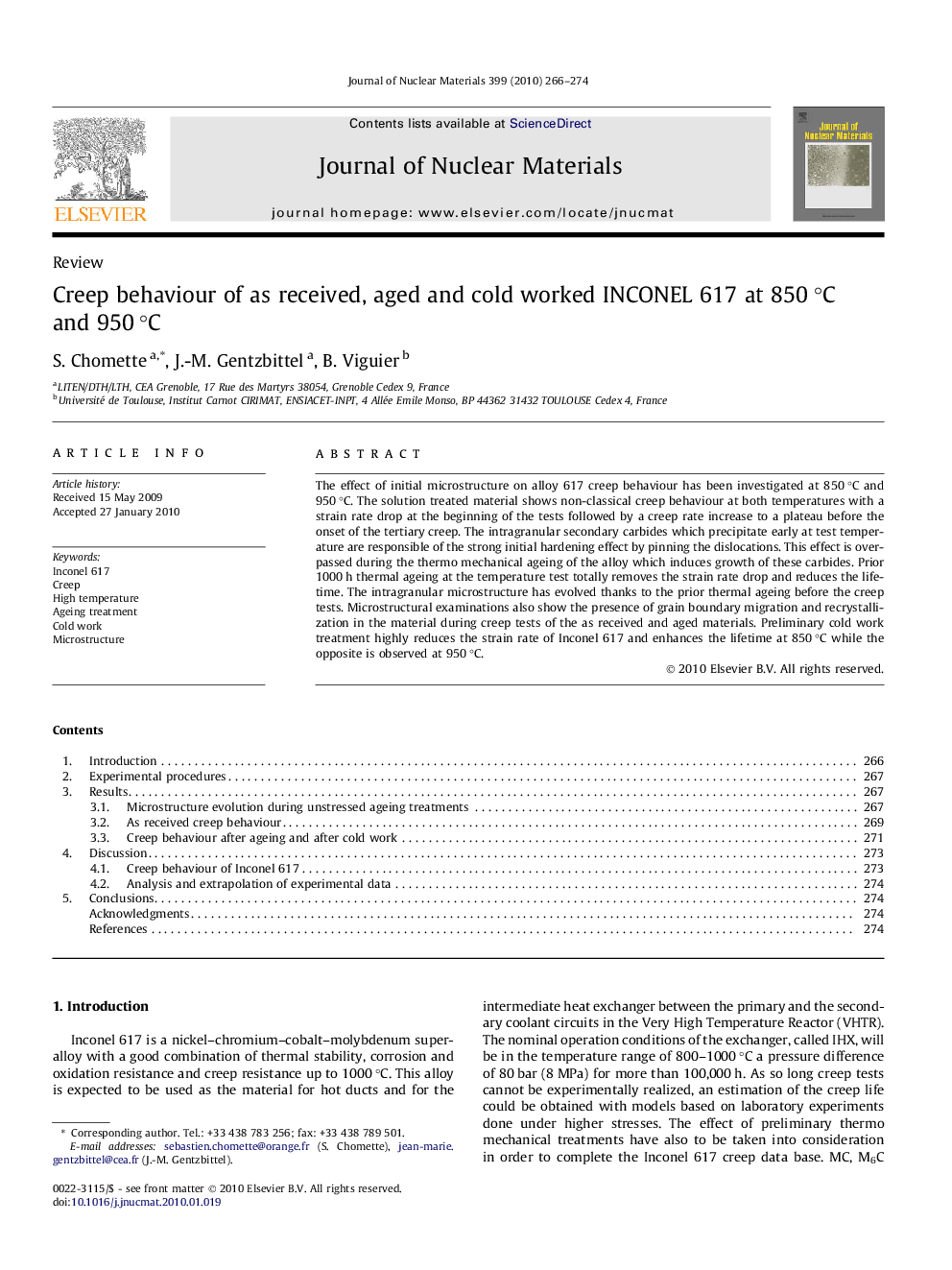| Article ID | Journal | Published Year | Pages | File Type |
|---|---|---|---|---|
| 1567862 | Journal of Nuclear Materials | 2010 | 9 Pages |
The effect of initial microstructure on alloy 617 creep behaviour has been investigated at 850 °C and 950 °C. The solution treated material shows non-classical creep behaviour at both temperatures with a strain rate drop at the beginning of the tests followed by a creep rate increase to a plateau before the onset of the tertiary creep. The intragranular secondary carbides which precipitate early at test temperature are responsible of the strong initial hardening effect by pinning the dislocations. This effect is overpassed during the thermo mechanical ageing of the alloy which induces growth of these carbides. Prior 1000 h thermal ageing at the temperature test totally removes the strain rate drop and reduces the lifetime. The intragranular microstructure has evolved thanks to the prior thermal ageing before the creep tests. Microstructural examinations also show the presence of grain boundary migration and recrystallization in the material during creep tests of the as received and aged materials. Preliminary cold work treatment highly reduces the strain rate of Inconel 617 and enhances the lifetime at 850 °C while the opposite is observed at 950 °C.
